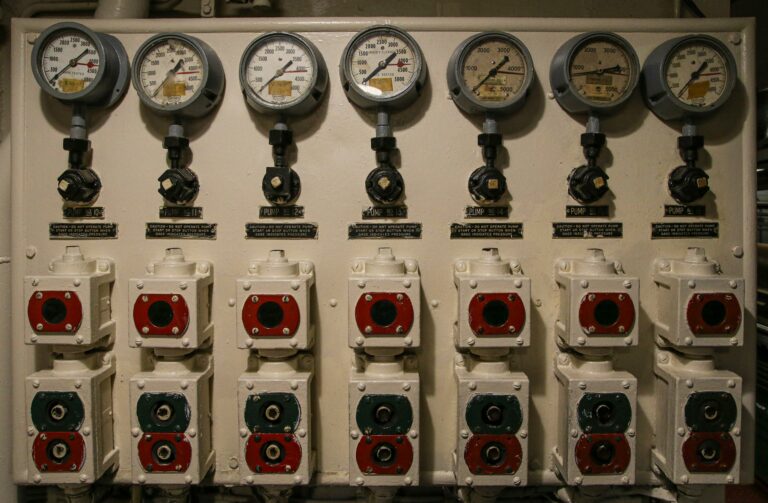List of HVAC Companies in the USA: Tips to Find the Best Fit for Your Project in 2025
The HVAC companies play a vital role in maintaining a healthy and comfortable indoor environment.
Read ArticleA Quick Glance to the Concept
Building Information Modeling, popularly abbreviated as BIM, is a largely integrated and collaborative process. The concept of BIM for MEP is crucial and engages engineers, architects, contractors, manufacturers, real estate developers, and other construction professionals to plan and execute the design of a building within a 3D model. This 3D model is a distinctive representation that showcases a building’s physical look, feel, and functionalities. Here’s how it works.
Salient Features of Building Information Modeling (BIM)
The evolution of BIM has revolutionized the design and planning phase of a construction project. It enables stakeholders like builders, contractors, engineers, and architects to visualize the functionality of the building with this powerful tool. There is an array of features of Building Information Modeling that enable people to boost the efficacies, quality, and collaboration of the civil project. Take a glance.
Best Digital Representation
One of the promisingfeatures of BIM is its capacity to produce anall-embracing digital representation of a building or civil project. Being a powerful and comprehensive tool, BIP includes additional components like time (4D) and cost (5D), along with a detailed 3D model of the project. This makes the stakeholders visualize the project end to end and understand the functionalities, the potential challenges, and risk mitigation ideas.
Conflict Resolution
The Building Information Modeling tool comes with a clash detection feature. This is a very special feature that helps the architects and engineers to scoop out and identify the conflicts in design and functionalities and between various elements. This is a super helpful feature and prevents extra costs, penalties, and additional rework that land up in extra money. This model ensures a seamless and hassle-free construction project.
Boosts Collaboration and Coordination
BIM assistsin seamless collaboration among project stakeholders. The tool works on a shared digital platform where engineers, architects, contractors, and even end-users can work in sync in real-time. They can coordinate amongst themselves at various stages and discuss the progress of the project. It also helps in conflict resolution and saves additional work. It is a platform of inter-departmental coordination for enhanced clarity and minimizing errors, aiming for a high-quality construction project.
Clarity on Construction Stages
The BIM tool has a special 4D time functionality. This allows all the people involved in the project to visualize the construction stages and sequence to understand the timeline of the project. This special feature boosts project planning by facilitating resource allocation and scheduling. Thus, the threat of delays is largely reduced, and the scope of optimizing construction efficiency is showcased.
Showcasing Sustainability
BIM works on sustainability analysis by fitting in energy simulation tools. This tool even encourages architects and engineers to design more energy-efficient constructions, both commercial and residential. Moreover, BIM endorses sustainability, decreases operational costs, and boosts the overall environmental performance of the project.
Helps in MEP
BIM has a major role to play in the MEP drafting and design phase. With special features of collaboration and coordination between various stakeholders, BIM plays a vital role in designing and drafting the MEP for a building. It helps to analyze the scope of work and design accuracy and identify the potential challenges related to mechanical, plumbing, and engineering aspects of construction.
BIM Facilitates MEP Design and Drafting
MEP design plays a crucial role in construction projects, as it encompasses the planning, designing, and placement of mechanical, electrical, and plumbing structures. MEP provides functionalities like heating, ventilation, water supply, wastewater disposal, electrical circuits, and power supply. To make the MEP drafting and design flawless, the need for a BIM tool is essential and inevitable.
Integration of Systems
MEP is associated with the integration of an HVAC system, which refers to heating, ventilation, and air conditioning systems with the electrical system. This is done to ensure uninterrupted power supply. The plumbing system is also closely knitted with water supply and wastewater disposal systems for hassle-free water supply and drainage. All these integrations between various systems and structures are flawlessly done by the BIM tool.
Energy Efficiency
With the growing trend of sustainability and energy conservation, MEP drafting services aim to produce systems that minimize energy consumption and keep environmental impact to a bare minimum. To make this system function, energy-efficient products like highly efficient HVAC systems, LED lighting fixtures, and smart switches are to be used. The BIM system portrays the feasibility of using these energy-efficient systems and helps the designers to plan accordingly.
Advantages of Using BIM in MEP Design and Draft
Integration of BIM into MEP design and draft services displays a plethora of advantages for the overall construction project. Here is the detailed note.
Enhanced Accuracy and Efficiency
With the technology of BIM, the MEP specialists can produce replica 3D models to foresee the placement of MEP components in the real-time set-up of the construction. This 3D model, accessible to all the stakeholders of the civil project, helps in the accurate analysis of thermal simulations, power supply energy consumption, and efficiency. As these happen at the design and draft stage, the engineers and architects can change the design and drafts, reduce errors, and augment the accuracy of the plan.
Effective Collaboration and Communication
As one of the most promising BIM advantages is collaboration, MEP draft specialists find it quite welcoming to involve, engage, and communicate at the design stage for better impact. The tool nurtures collaboration at every level, which encompasses the exchange of ideas, information, and disagreed points. The collaboration between various stakeholders helps in executing the decision-making process smoothly.
Savings in Cost and Time
Due to coordination, evaluation of risks and challenges, visualization and clarity of the feasibility of the project, and smooth decision-making at the right stage, projects working with BIM during MEP planning, design, and drafting tend to save a lot of additional costs and time by avoiding last-minute reworks.
Integration of BIM and MEP
The integration of BIM and MEP systems includes the shared effort of diverse professionals, like engineers, architects, contractors, and subcontractors. With the help of BIM tools, these stakeholders can access a shared data pool and make seamless communication and collaboration. By embedding MEP drafts into the BIM model from the initial phases, design conflicts can be located and reworked, resulting in cost and time savings.
The MEP and BIM collaboration process commences with the generation of a comprehensive BIM model that comprises all connected MEP systems. The draft and design specialists work in sync with civil engineers and architects to ensure that the MEP systems are seamlessly functional with the overall building design. This collaboration considers the optimization of space utilization, operational performance, and energy efficiency.
With the development of the project, the BIM model functions as a central repository of information and data, empowering all stakeholders to access real and up-to-date data. This accessibility boosts coordination among various teams, thereby decreasing incorrect design and improving overall project efficiency. Any changes made to the MEP systems are reflected in the BIM model.
The BIM tool is also an integral part of the design of contractors and subcontractors. Most of the leading MEP drafting services in the USA use the tool to understand the feasibility of mechanical, plumbing, and electricity components of the building. It also helps in providing detailed and elaborate information about the installation and sequencing of MEP systems, streamlining the construction processes.
Conclusion
The repository of BIM works wonderfully in every stage of the construction project. Be it commercial buildings or residential condominiums, the integration and collaboration of BIM for MEP is supremely helpful and makes the entire project go smoothly. From installation of HVAC systems, water, and power supply to wastewater disposal and power backup systems, every component of the mechanical, electrical, and plumbing fixtures is designed and analyzed through the BIM tool. Not only their placement, but the tool also checks how feasible they are in a particular constriction and how their functionalities can work flawlessly. So, if you are a part of the construction team and planning a civil project soon, ensure to integrate the BIM tool into the MEP design and drafts for hassle-free execution.

The HVAC companies play a vital role in maintaining a healthy and comfortable indoor environment.
Read Article
The dynamism and revolution in HVAC design services USA have witnessed significant development, involving innovative technology and software applications.
Read Article